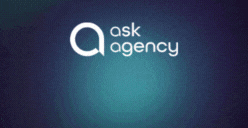In case you missed it see what’s in this section
Let's Talk
Your Total Guide To lifestyle
Top Mistakes Students Make When Preparing for the ESAT Test
A Cambridge prof once said, “If you’re not making mistakes, you’re not reaching far enough!” The ESAT is designed to stretch you, so embrace the stretch.
Ignoring the Official ESAT Specification
Use the spec as your navigation app—don’t get lost
The spec is like your map—it tells you exactly what Cambridge expects: topics, depth, and even the style of thinking they want. If you don’t study the map, you might wander off into fascinating but irrelevant territory (and miss what actually gets tested).
People assume “all science is good science” and get distracted by cool but off-syllabus topics, or use random resources that don’t match the test. Therefore, start every prep cycle by reading the spec. Use it as a checklist to stay on track.
Over-Relying on Past Papers
Past papers are rehearsals, not the whole play
ESAT past paper is gold, but if you only do them, you’re just rehearsing old questions, not building flexible skills. The ESAT is famous for throwing new twists on familiar ideas!
Of course, it feels productive and safe—plus, let’s be honest, it’s satisfying to see your scores go up on familiar tasks. So, do some past papers for practice, but mix in new questions from textbooks, challenge problems, and anything that makes you “think sideways.” Try explaining answers aloud or teaching a concept to someone else for deeper understanding.
Neglecting Time Management Practice
Practice time management now, so test day feels familiar
At home, you are more relaxed. But the real test? Different story. Even top students can freeze up, get stuck on a hard problem, or lose track of time.
And, it’s easy to think, “I’ll just do my best and not worry about the clock.” But under exam pressure, even calm minds can panic.
Sometimes, set a timer and do a practice paper under real conditions. Notice where you lose time. Practice moving on from stuck questions, then circling back. This builds exam resilience, not just knowledge.
Cramming or Last-Minute Studying
Build skills gradually—don’t try to sprint a marathon
Deadlines creep up, life gets busy, and cramming feels like a quick fix. Science skills are built like muscles: slow, steady reps > one giant sprint. Cramming only loads up short-term memory, which leaks away under stress.
Fix it with spreading practice over weeks. Use spaced repetition—review tough topics regularly, not just once. Little and often wins the race.
Not Reviewing Mistakes Properly
Embrace mistakes—they’re your teachers in disguise
Mistakes are pure gold for learning—if you dig into them. Skimming over wrong answers means you might repeat them next time. It feels awkward to confront errors, or you’re eager to move on.
For every mistake, ask: “Where did my thinking go off track? What would I do next time?” Write a mini-explanation or summary in your own words. If you can teach the right method, you’ve nailed it.
Focusing on Memorization Over Reasoning
Connect ideas, don’t just collect them
The ESAT loves to test “can you think it through?” instead of “can you recite facts?” If you only memorize, you’ll get tripped up by unfamiliar twists. It happens because memorizing feels concrete and manageable. Reasoning through new problems feels risky. And your brain avoids risks.
After learning a fact or formula, ask yourself, “Why does this work?” Try to connect ideas, not just collect them. Practice with “application” and “explain why” questions. Remember that even if you feel you know it—it’s a very sly trap.
Every mistake is just a stepping stone to mastery, especially when you understand the “why” behind it. That’s how scientists (and good learners) grow: by making thoughtful tweaks, not just working harder.
Neglecting Weak Spots
Show some love to your weak spots—they need you most!
It’s tempting to stick with topics you like, but your weakest link can drag your whole score down. Working on strengths feels good; tackling weaknesses feels uncomfortable. We used to avoid unpleasant things.
Identify your “pain points” early. Set a schedule to revisit them until they’re strengths, not just gaps. Make a muscle there, and you will be rewarded.
Transforming Mistakes Into Experience: Your Secret Weapon
Mistakes are like those strange ingredients in a recipe: if you know how to cook them, they make the dish unforgettable. The trick is not just to notice the mistake, but to work with it—ask what went wrong, what you misunderstood, and how you’ll spot it next time. This reflection turns “oops” moments into “aha!” moments. Over time, this process rewires your brain for deeper learning. That’s the real magic.
Building a Battle-Plan: Balance & Integration
Think of your prep as a well-planned expedition, not a random stroll. Here’s how you might set it up:
- Balance Subjects
Alternate days (e.g., Maths one day, Physics the next), or pair a tough topic in one (say, vectors in Maths) with a related topic in the other (vectors in Physics!).
- Integrate Concepts
When topics overlap (like energy, rates of change, probability in Physics and Maths), study them together. Try to see the connections—draw diagrams, make comparison tables, or even write little stories linking the ideas.
This cross-linking isn’t just efficient—it actually strengthens memory, because your mind loves building “networks” instead of single “islands” of knowledge.
Heat Maps & Logs: Tracking Focus Like a Scientist
Heat Maps
- Make a simple spreadsheet or even use colored sticky notes.
- After each study session, rate how focused/engaged you felt (say, 1–5).
- Over time, you’ll spot patterns—maybe you’re always sharper in the morning, or struggle after lunch.
Logs/Journals
- After a session, jot down what worked, what didn’t, and any “aha” moments.
- Track which topics feel tough and how your confidence changes.
This lets you optimize your routine, not just repeat it. You’ll find your own “peak performance” zones and avoid burnout.
Making Hard Concepts Fun: The Joy Hack
When something feels dry or impossible, it’s your brain’s way of saying, “This doesn’t fit my map yet!” So why not sneak it onto your map through joy?
Gamify
- Turn concepts into little games, quizzes, or challenges.
- Compete with yourself, or explain the idea to a friend like you’re a YouTuber.
Personal Connection
- Link the concept to something you love (e.g., relate calculus to your favorite sport—velocity, trajectory, etc.).
- Use silly mnemonics, doodles, or even memes.
Reward Routine
- Pair a tricky topic with a small treat—maybe your favorite snack or a quick dance break.
- Over time, your brain starts to associate the hard stuff with a positive vibe, not dread.
The Ultimate Feedback Loop
Every time you struggle and reflect, you’re upgrading your own “learning operating system.” You’re not just prepping for ESAT—you’re prepping for a lifetime of scientific curiosity and resilience. Mistakes, logs, joy routines—they’re all just tools in your personal lab.
And remember: the best discoveries often come from the quirkiest experiments. So keep it joyful, keep it curious, and keep asking the questions others are afraid to ask. That’s how breakthroughs—big or small—really happen!
Weather in Manchester
Listings




